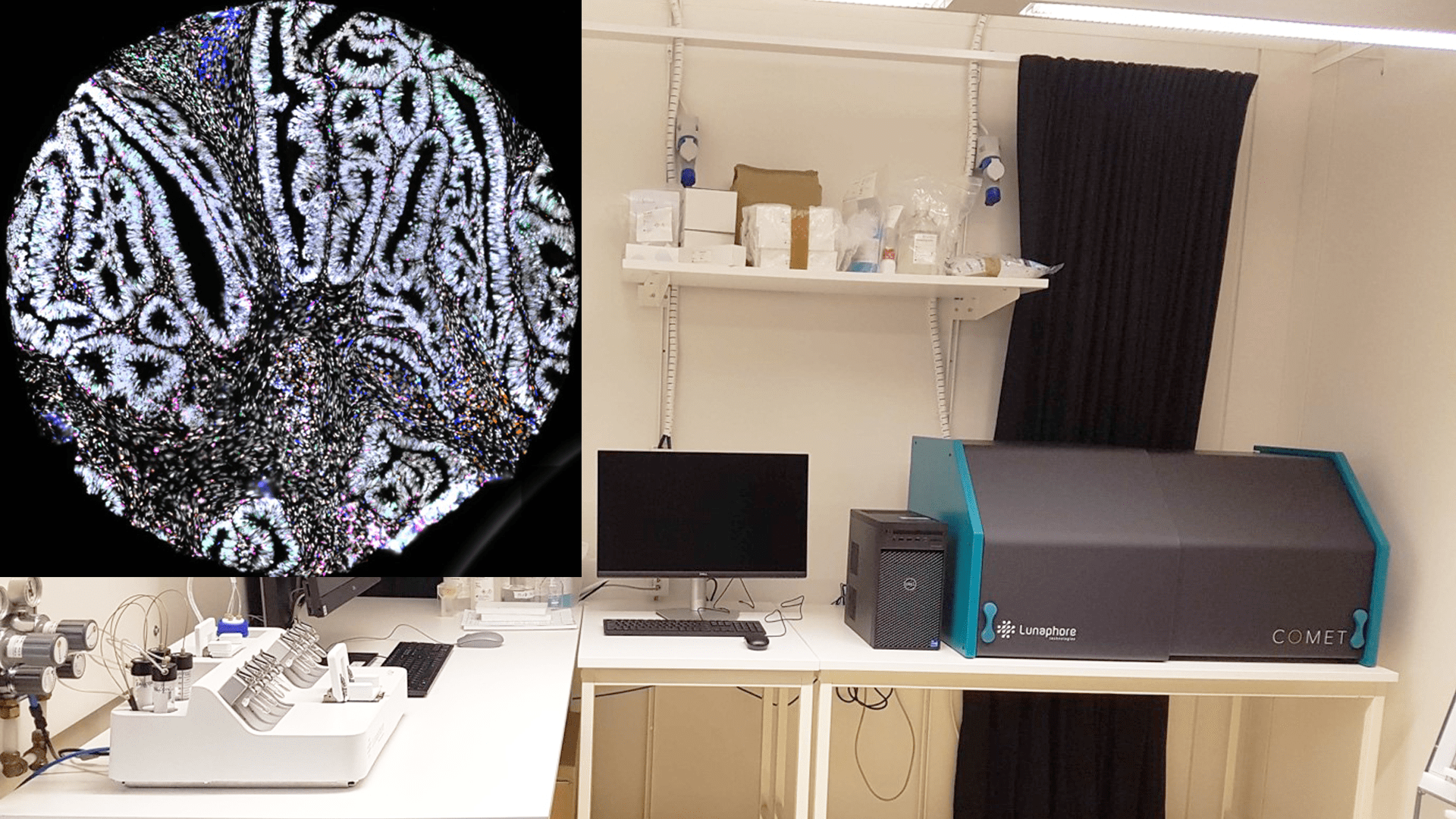Infrastructure update: COMET, a new instrument in the Spatial proteomics Unit
A new instrument for applying multiplexed spatial protein detection on cells and tissue sections have been installed in the Spatial Proteomics Unit, part of the SciLifeLab Spatial and single cell biology (SSCB) platform. The brand new instrument, from Lunaphore, is called COMET, and is used for applying sequential indirect immunofluorescence (IF), with of-the-shelf primary antibodies.
COMET is an integrated system that performs both the staining and imaging of up to four slides in parallel in a fully automated manner. The biggest advantage with this instrument is that it relies on secondary antibodies for detection, meaning that any primary antibody working in regular tissue staining applications can be directly used and included in a multiplexed panel.
“For users working on diverse projects, including a variety of key protein markers, this is a great solution as they can continue to work with the same antibodies they already have experience with”, says Charlotte Stadler (SciLifeLab/KTH), Head of the Spatial Proteomics Unit.
The first projects using COMET are already initiated and includes lung cancer and mouse colon samples. Additional project applications are currently being prepared.
How should someone who are interested in using COMET get started?
“The easiest way is to send us an email to schedule a consultation around the intended project. Much of the early work can be done by the user, like optimization of each of the antibodies to be included in the multiplexed panel. Our focus of the project is then to optimize the conditions on COMET and building the multiplexed panel”, says Charlotte.
COMET is funded by the parts of the VR instrument grant that was given to the SSCB platform in 2021.
“We are very happy that the instrument is already in place and that we can now start to offer this new service to all of our users says”, Charlotte.
Send your request to spatial.proteomics@scilifelab.se





